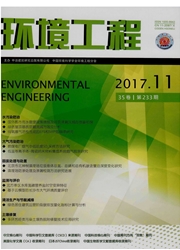

 中文摘要:
中文摘要:
南京2013年冬季至2014年春季多次出现灰霾污染天气过程,防治颗粒物污染刻不容缓,其中细颗粒物(PM_(10))和超细颗粒物(PM_(2.5))所占比例较大。利用南京市环保局空气质量发布平台污染物监测数据和中国天气网站气象要素数据,对冬春季PM_(2.5)和PM_(10)质量浓度的变化特征以及它们与气象条件的关系进行分析。结果表明:南京冬季PM_(2.5)、PM10平均浓度分别为0.0982,0.1536 mg/m3,春季平均浓度分别为0.0673,0.1207 mg/m3。市区和郊区污染程度由高到低依次为:市区〉江宁〉六合〉溧水。南京空气中颗粒物小时平均浓度日变化呈"双峰双谷型"特征。颗粒物与相对湿度、降雨量和风力呈一定的负相关性,与温度呈一定的正相关性,它们共同影响颗粒物质量浓度水平和大气污染状况。
 英文摘要:
英文摘要:
Fogs and hazes broke out several times in winter 2013 to spring 2014 in Nanjing, the proportions of fine particulate matter (PM10) and ultrafine particles (PM2.5 ) were high, so dust contamination control was urgent. Using the automatic monitoring data of winter and spring from the atmospheric environment monitoring platform in Nanjing Municipal Environmental Center Station and the corresponding meteorological factors data from China Weather Network, this paper analyzed the variation characteristics of PM25 and PM10 mass concentration and the relationship between meteorological factors. Results showed that the average PM25 and PM10 mass concentration in winter in Nanjing was 0. 0982 mg/m3 and 0. 1536 mg/m3 , in spring was 0. 0673 mg/m3 and 0. 1207 mg/m3, Particulate pollution intensity had significant differences in the urban and suburbs, with the sequence of Nanjing 〉 Jiangning 〉 Liuhe 〉 Lishui. The daily variation of particulate matter presented the ' bimodal dual valley type'. Between particulate matter and the relative humidity, rainfall and wind were negatively correlated, but temperature was positive correlated. These meteorological factors affected the concentration levels of particulate matter and air pollution situation.
 同期刊论文项目
同期刊论文项目
 同项目期刊论文
同项目期刊论文
 期刊信息
期刊信息
